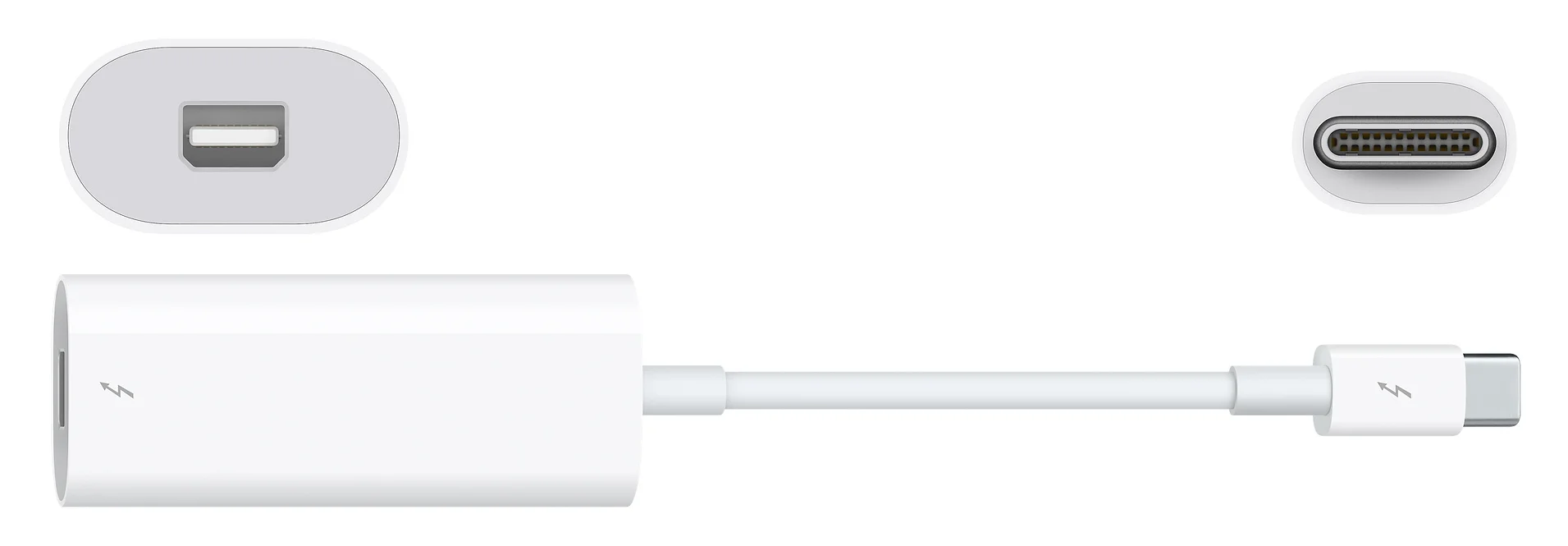How does a USB-C to Mini DisplayPort to Thunderbolt adapter work?


USB-C to Mini DisplayPort to Thunderbolt adapters are a popular choice for individuals who need to connect their USB-C devices to a display that uses a Mini DisplayPort or Thunderbolt connection. These adapters provide a seamless solution for users who want to extend their display capabilities or connect their USB-C devices to external monitors, projectors, or other display devices.
In this article, we will explore how a USB-C to Mini DisplayPort to Thunderbolt adapter works, discussing the technology behind it, its compatibility with different devices, and the process of transmitting a digital signal from a USB-C device to a display.
Understanding USB-C and Mini DisplayPort
Before delving into the functionality of the adapter, it is essential to understand the two primary technologies involved: USB-C and Mini DisplayPort.
USB-C, also known as USB Type-C, is a versatile and widely adopted connectivity standard. It offers a reversible connector that can transmit both power and data. USB-C ports are found on many modern devices, including laptops, tablets, smartphones, and even some monitors.
On the other hand, Mini DisplayPort is a digital display interface developed by Apple. It is commonly used to connect Mac computers to external displays, such as monitors or projectors. Mini DisplayPort supports high-resolution displays and can transmit both audio and video signals.
How the Adapter Works
A USB-C to Mini DisplayPort to Thunderbolt adapter acts as a bridge between a USB-C device and a display that uses a Mini DisplayPort or Thunderbolt connection. It converts the USB-C signal into a format that is compatible with the Mini DisplayPort or Thunderbolt interface.
Here is a step-by-step breakdown of how the adapter works:
1. The USB-C device, such as a laptop or smartphone, sends a digital signal through its USB-C port.
2. The USB-C to Mini DisplayPort to Thunderbolt adapter receives the digital signal from the USB-C device.
3. The adapter converts the digital signal into a format that is compatible with the Mini DisplayPort or Thunderbolt interface.
4. The adapter transmits the converted signal to the display device through its Mini DisplayPort or Thunderbolt port.
5. The display device receives the signal and displays the content on its screen.
Compatibility and Connectivity
USB-C to Mini DisplayPort to Thunderbolt adapters are designed to be compatible with a wide range of devices. However, it is essential to ensure that the adapter you choose supports the specific devices you intend to connect.
Here are some key points to consider regarding compatibility and connectivity:
– The USB-C device must support video output through its USB-C port. Not all USB-C devices have this capability, so it is crucial to check the specifications of your device.
– The adapter should support the Mini DisplayPort or Thunderbolt version required by the display device. For example, if your display device uses Thunderbolt 3, make sure the adapter supports Thunderbolt 3.
– Some adapters may require additional drivers or software to be installed on the USB-C device for proper functionality. Check the manufacturer’s instructions or website for any specific requirements.
Transmission of Digital Signal
The USB-C to Mini DisplayPort to Thunderbolt adapter ensures the transmission of a digital signal from the USB-C device to the display device. This digital signal carries both audio and video data, allowing for a seamless display experience.
Here are some key points to understand about the transmission of the digital signal:
– The adapter converts the digital signal from the USB-C device into a format that is compatible with the Mini DisplayPort or Thunderbolt interface. This conversion process ensures that the signal can be properly understood and displayed by the connected device.
– The digital signal is transmitted through the adapter using high-speed data transmission technologies, such as DisplayPort or Thunderbolt. These technologies ensure that the signal is transmitted quickly and accurately, resulting in a high-quality display.
– The adapter may also support additional features, such as multi-stream transport (MST) or daisy-chaining. These features allow for the connection of multiple displays or the extension of a single display across multiple screens.
Conclusion
USB-C to Mini DisplayPort to Thunderbolt adapters provide a convenient solution for connecting USB-C devices to displays that use a Mini DisplayPort or Thunderbolt connection. These adapters convert the USB-C signal into a format that is compatible with the display device, ensuring a seamless transmission of the digital signal.
Understanding the technology behind these adapters, their compatibility with different devices, and the process of transmitting a digital signal is crucial for users who rely on them for their display needs. By following the guidelines and considering the factors mentioned in this article, users can make informed decisions when choosing and using USB-C to Mini DisplayPort to Thunderbolt adapters.
Recent Posts
How do I create an engaging and informative online quiz or assessment?
Creating an engaging and informative online quiz or assessment can be a powerful tool for… Read More
What are the most effective methods for managing and reducing work-related stress in the hospitality industry?
Work-related stress is a common issue in the hospitality industry, where employees often face long… Read More
How can I improve my assertiveness and communication skills in a leadership position?
In a leadership position, assertiveness and effective communication skills are crucial for success. Being able… Read More
What are the key elements of a successful employee recognition and rewards program?
Employee recognition and rewards programs play a crucial role in motivating and engaging employees, as… Read More
How do I effectively manage and respond to customer feedback and reviews?
Customer feedback and online reviews play a crucial role in shaping a company's reputation and… Read More
What are the best strategies for effective time management as a stay-at-home parent?
Effective time management is crucial for stay-at-home parents who juggle multiple responsibilities on a daily… Read More
